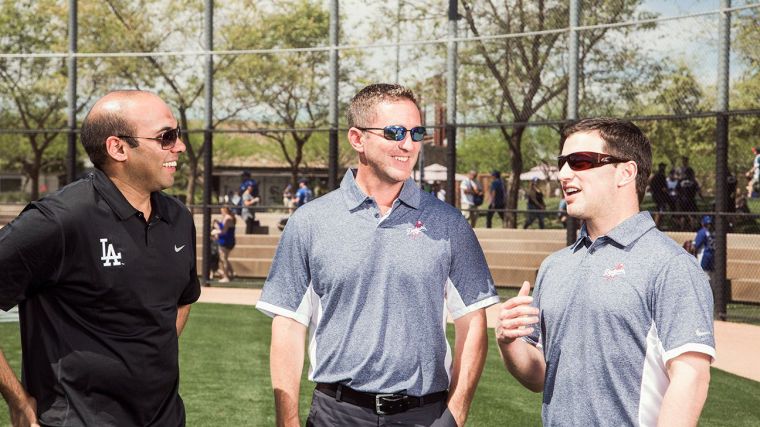
In a column over the weekend, Bill Shaikin of the Los Angeles Times wrote about the organizational spending of the Dodgers, and how the team needs to reduce payroll. In the piece, he states that the Dodgers are mandated by Major League Baseball to reduce their debt in order conform with the league’s rules. The overall of goal is to have payroll closer to $200 million by 2018, down from its high that was close to $300 million in 2015.
Reducing payroll comes at an inopportune time, as Justin Turner and Kenley Jansen both have just become free agents. Most Dodgers fans would like to see at least one, if not both, of these players re-signed. And, of course, both players are expected to receive record contracts. Jansen is arguably the best closer on the market, and Turner is coming off a career-best season.
The Dodgers’ front office has said that they would like to retain both players. But what are the options for a team that is looking to not take on huge contracts?
The first way is to look for cheaper available options, be it outside the organization or within. As for the relief corps, the Dodgers bullpen led the league last year. But Jansen was a huge part of that, and while they still have good setup men, a top closer is paramount to getting to the ultimate goal of a World Series title, as we all just witnessed. Outside, some economical options might include Greg Holland, Brad Ziegler or Koji Uehara, who would be much less expensive. Less expensive, but as effective as Jansen? Probably not. The Dodgers were able to climb back into the race in the 2016 because of the depth of their farm system, and maybe they would be willing to test that again by using as many pieces as possible already in house.
Third base is even more tricky, as Turner is the best third baseman available. The only in house option is Enrique Hernandez, and he isn’t really an every day option. Other available free agents at third include Trevor Plouffe and Stephen Drew. They are about equal in terms of batting average and WAR, with Plouffe being three years younger than Drew.
A second option is to give back-loaded contracts to Jansen and/or Turner. They recently did this with Scott Kazmir. The Dodgers have a lot of money coming off the books in 2018, when they are finally done paying off Carl Crawford and Alex Guerrero. Andre Ethier will have a club option then also, which the club would presumably deny. About $46 million would be then available for use. Of course, Clayton Kershaw can choose to opt out at the end of the 2018 season, and the Dodgers should make any and all necessary moves to make sure Kershaw does not end up signing somewhere else.
A third option would be to trade for players at third and closer. As the Dodgers already have pressing needs at second base and perhaps another starting pitcher, they may need their prospects/trade pieces for those positions.
If the past has shown us anything, the front office for the Dodgers is willing to get creative in how they put the team together. I wouldn’t rule out more three-way trades, and inexpensive options at any position. While the front office has stressed that they want to remain competitive while building and keeping the farm system intact as much as possible, it will certainly be interesting to see how they actually achieve this.

Really, you’re buying into this whole story of problems with debt? It’s a red herring to misdirect those critical of the front office.
A quick overview….the Dodgers take in $334 million/year from their cable deal with Spectrum (formerly Time Warner), MLB Advanced Media estimate of $110 million/year, attendance is maybe $185 million (3.7 million tickets at $50 average/seat), Parking maybe $16 million/year, Concessions $30 million/year, Sponsorships $40 million/year and merchandise an additional $35 million/year. Most of these are estimates from various sources which total over $750 million/year. That’s right, per year. They have to pay out TV rights fees to MLB of about $40 million/year and other costs of $30 million/year. So operations nets them $680 million+/year.
Guggenheim Partners assumed $412 million of McCourts debt when they bought the Dodgers and that is probably still there. I’m sure they have used their cash flow to renovate Dodgers Stadium and dump they deadwood on the roster.
Remember these guys are some of the smartest business guys around (as well as baseball geniuses). I’m sure the cable TV revenue is buried in their Sportsnet LA Subsidiary as are the other revenue streams so when MLB opens their books they can cry and say how hard they are trying to make a profit, please give us a little more time. Or to tell agents, players and fans, how tough it is and they just can’t afford Justin Turner.
I’m all for this stupid story making the rounds because the Dodgers will continue to build the organization into the powerhouse and envy of Major League baseball.
LikeLike
If you use prospects to land players your salary just went up some more.
LikeLike